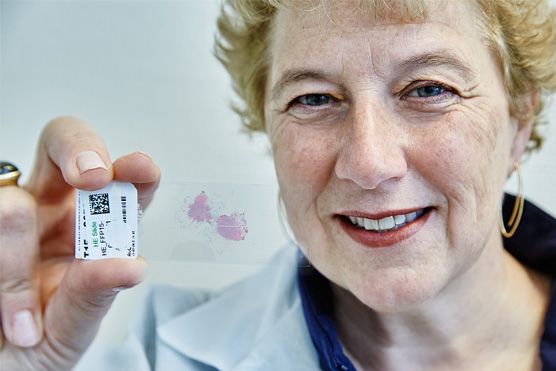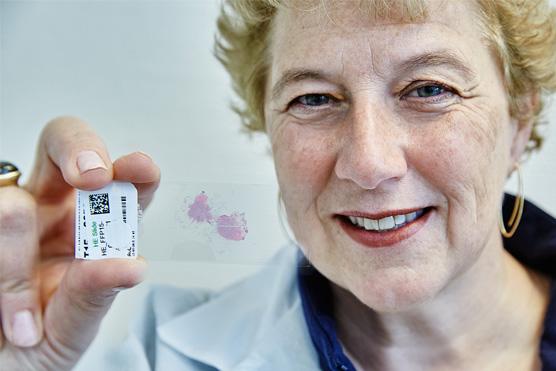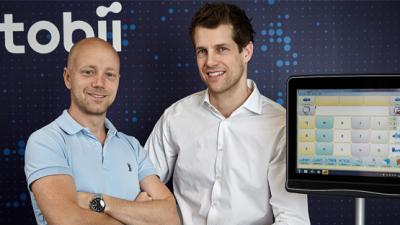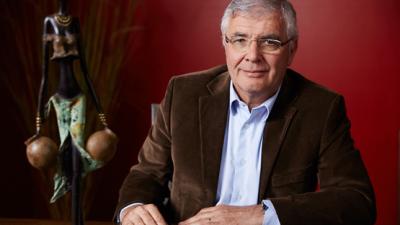Laura van't Veer
Gene-based breast cancer test
Winners of the European Inventor Award 2015
The team’s gene-based test, introduced in 2007, evaluates tumour tissue for the 10-year risk of cancer recurrence. The novel test has proven a paradigm shift for care providers by identifying high-risk patients who actually require chemotherapy, and low-risk patients who can be spared the potentially damaging side-effects of toxic chemical treatments.
Van ‘t Veer and her team achieved their breakthrough by extensively studying the genetic properties of tumour samples from breast cancer cases, stored in a tissue bank at NKI. This led to the identification of a specific genetic “signature” consisting of 70 genes that determine whether an individual’s genetic profile tested at a low or high risk for the growth of secondary cancers.
Societal benefit
The World Health Organisation (WHO) estimates that around 450,000 women died because of breast cancer in 2011. It remains the most common cancer in women today. Although survival rates have greatly improved over the past decade – currently at 80% or higher in North America, Sweden and Japan – treatment of the disease can take a heavy toll on patients, especially the side-effects of chemotherapy.
Thanks to this invention, patients diagnosed with a low risk of tumour recurrence can forego chemotherapy entirely and still remain disease-free. This is extremely beneficial because chemotherapy is not only costly, but can also put strain on patients, suppressing their immune system, even causing liver damage or organ failure.
Economic benefit
Marketed by van ‘t Veer’s start-up company Agendia NV as the MammaPrint, the team’s microarray test has so far been used by more than 40,000 early-stage breast cancer patients in 34 countries. When patients take the test, providers use a small sample of breast tissue that is sent to Agendia for analysis, and many health insurance providers cover the costs.
Based in Amsterdam and Irvine, California, Agendia is currently ranked among the world’s 14 leading molecular diagnostics firms by revenue, with a turnover of € 9.8 million (US$ 12 million) in 2012. Regarded as a key future technology in the personalised medicine segment, genomic analysis was a € 3.58 billion (US$ 4.4 billion) market in 2011. It is expected to reach € 4.3 billion (US$ 5.2 billion) by 2016.
How it works
The MammaPrint test is conducted on tumour tissue samples about 3 x 3 millimetres in size by using microarray chip technology. A microarray is a small rectangular plate coated with minuscule drops of DNA arranged in a matrix pattern.
Each single drop of DNA corresponds to the code of one precise gene. The MammaPrint test measures the activity of 70 cancer-specific genes for a total of six times for reliable outcomes. The test monitors activity in the cancer-specific genes by checking levels of mRNA molecules – also known as “messenger RNA”. Based on the levels of the 70 cancer-specific genes, the test determines a patient’s risk of metastasis (spread of a cancer from the initial site to another location in the body).
The inventor
As a young researcher at the Netherlands Cancer Institute (NKI), Laura van ‘t Veer studied the genetic traits of breast cancer tumours, working with René Bernards. After their breakthrough discovery, the two research partners founded Agendia in 2003 with the goal of safeguarding and growing the library of genetic markers necessary for the MammaPrint test.
During a career in molecular oncology spanning over 25 years, Laura van ‘t Veer has published more than 230 papers in peer-reviewed scientific journals and currently heads the Netherlands Cancer Institute DNA-diagnostic laboratory. She is a professor at the Department of Laboratory Medicine at the University of California in San Francisco, where she lives.
For her achievements in breast cancer research, van ‘t Veer has received several awards including the Van der Scheuren Lecture Award, the ESMO Lifetime achievement Award, the Breast Cancer Research Fund Grant, and the EU 2014 Women Innovator Award second prize.
Did you know?
The invention provides final scientific proof of the “seed and soil” hypothesis already made by English surgeon Stephen Paget in 1889. Paget assumed that metastasis – the growth of secondary cancers throughout the body – is not random, but based on individual patient predisposition: “When a plant goes to seed, its seeds are carried in all directions; but they can only live and grow if they fall on congenial soil.”
Almost 120 years and numerous major genetic breakthroughs later, Laura van ‘t Veer and team identified the “congenial soil” for breast cancer as a specific set of genetic markers covered by their microarray test.
Inventors revisited
In 2020, the EPO reconnected with former finalists and winners for their views on trends in innovation and intellectual property, and a rare glimpse at cutting-edge new research and inventions.
Conquering cancer with gene based testing
A breast cancer diagnosis often leaves patients with two vital questions: will I need chemotherapy? Will the cancer return? Molecular biologist Laura van 't Veer provides answers with her gene‑based breast cancer test. An accurate diagnosis helps medical professionals offer better treatment and prevents patients from needlessly suffering the damaging effects of chemotherapy.

Talk innovation
Inventor, researcher, professor and businesswoman: Laura van 't Veer wears many hats. In these podcasts, she shares her views on balancing research, running a business and mentoring young scientists.
Media gallery
Patent numbers:
Contact
European Inventor Award and Young Inventors Prize queries:
european-inventor@epo.org Subscribe to the European Inventor Award newsletterMedia-related queries:
Contact our Press team#InventorAward #YoungInventors







